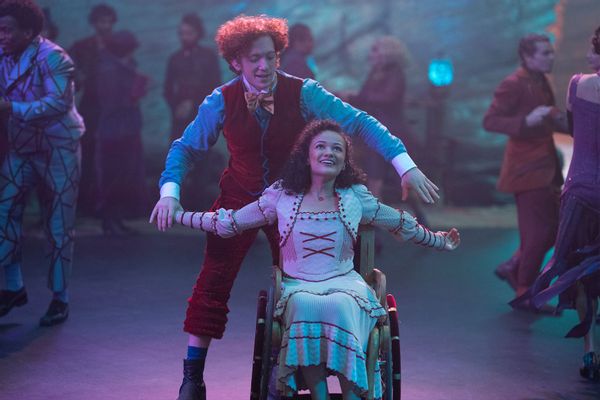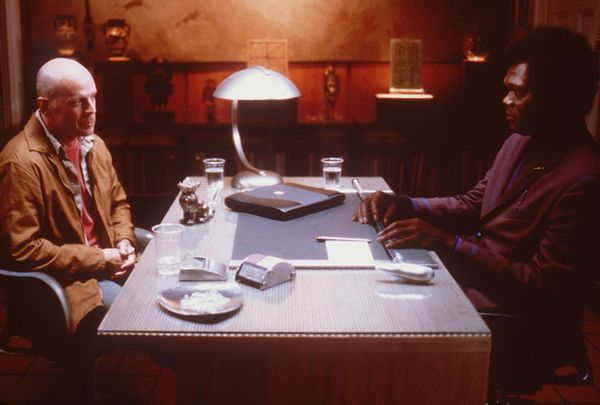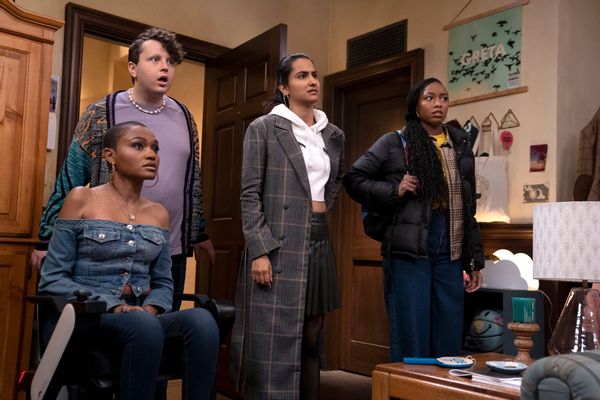
When the “Wicked” film casting call went out in 2022 for Nessarose – the wheelchair-using younger sister to future Wicked Witch Elphaba – the enthusiastic response from disabled actresses was seen all over social media. In my Facebook feed alone I had several wheelchair-using friends who were excited to audition and, more importantly, were ecstatic that director Jon M. Chu was making a point to cast the character authentically. It was definitely far more than the long-running Broadway show had done, never actually casting a wheelchair-using actress over the last 20 years of its run.
This year, disabled audiences were able to see if their anticipation was finally bearing fruit in actress Marissa Bode’s performance. It wasn’t just that Nessarose was played by a real person in a wheelchair, it was the additional fact that she was a Black wheelchair-using actress playing the character.
When it comes to seeing disability on a screen big or small it’s usually a white man’s game. The statistics bear this out as 71.7% of disabled characters in the most popular movies between 2007 and 2023 are men and 54.6% of them are white, according to the 2024 Annenberg study looking at inequality in cinema. It’s still a rarity to see a disabled woman onscreen, let alone one of color who is actually disabled. So to see a Black actress like Bode in the role is a vital moment for representation, no doubt inspiring an generation of disabled children of color in the same way as Halle Bailey’s casting as Ariel in 2023’s live-action remake of “The Little Mermaid.”
Adapted from Gregory Maguire's novel "Wicked" – a reimagined prequel of L. Frank Baum’s book that inspired 1939's “The Wizard of Oz” – the musical follows Elphaba (Cynthia Erivo) as she attends the prestigious Shiz University for witches and other magical students. Elphaba is the black sheep of her family, having been born with green skin unlike her parents. In contrast, her younger sister Nessarose is their father's favorite and therefore receives their mother’s silver slippers as a gift so that people can see “how beautiful you are, right down to you feet.”
Beauty is heavily considered when it comes to which disabilities studios deem are worthy of being seen onscreen. Disabled women in film can fall into the “pretty disabilities” trope – when a beautiful actress playing disabled appears able-bodied enough to still be perceived as desirable. Even if the actress herself is truly disabled, studios employ the pretty disabilities stereotype because they believe a predominately able-bodied audience will not empathize with a disabled heroine who is too disabled-looking. That said, it's refreshing when a disabled person is seen as desirable enough to get a storyline that encompasses more than their disability. In the case of "Wicked," that means Nessarose eventually wielding magic and having a love interest. While Elphaba goes on a journey of identity and self-acceptance, Nessa does that as well, trying to forge a romantic relationship with Boq (Ethan Slater), a fellow Shiz student.

Meanwhile, while Nessa is Elphaba’s closest friend and confidante, Nessa believes Elphaba is at Shiz University to take care of her, as a mother would with her child. Historically, women wheelchair users in films are depicted as sad, confined women or vicious shrews. Fortunately, as far as “Wicked” is concerned, Nessarose is none of those things. It is others around her, like her teachers and her father, who seek to keep her child-like and protected from the world.
However, Elphaba is the one person who understands Nessa’s desire for independence. Where other characters say Nessa is “tragically beautiful” and “beautifully tragic” with all the finality of a terminal illness, Elphaba turns it into a joke. Later, when someone once again declares that Nessa is “tragically beautiful," Elphaba immediately adds, “and beautifully tragic," no doubt having heard this said thousands of times about her sister. She doesn’t use it as Nessa’s identifier but instead, uses it to poke fun at people’s misplaced assumptions of Nessa.
“I see a lot of myself in her, especially as somebody who’s disabled, going off to college and finally feeling like you have that freedom for the first time,” said Bode in an interview for the LA Times. “I had that same eagerness she has, of wanting to be independent, make new friends and find your place in the world.”
And Nessa, to her credit, is given opportunities to right some of the wrongs lobbed at disabled women. When Nessa first arrives at Shiz, one of the teachers tries to push Nessa’s chair without her consent. Both sister state very strongly that Nessa doesn’t like that and that she can do it herself. When Nessa is traversing the halls of Shiz, or during a trip to the Ozdust ballroom with friends, the viewer sees these locations have stairs and can immediately wonder, “How is Nessa going to get here?” highlighting how accessibiity is not always available. In contrast, we see Bode wheel down a ramp placed alongside the stairs in the Ozdust Ballroom scene. The camera doesn’t make a point of showing these ramps full-on, just Nessa clearly getting from A to B, but the fact that the production design team took the time to add them is a real celebration of inclusive design.
If one was to read the interviews with Bode, this is a game-changer for disabled representation, and it is, to a point. The stage musical has received its fair share of criticism since its inception 20 years ago for always casting an able-bodied performer as Nessarose. This is mostly due to the musical’s finale which sees Nessarose getting the magical ability to walk, requiring an actress who can stand on her legs. Nearly all of Bode’s interviews have emphasized she is the first wheelchair user to play the role. And, honestly, abled actors playing wheelchair users is far more common in film and television, from the character of Artie (Kevin McHale) in “Glee” to Gary Sinise’s Lieutenant Dan in “Forrest Gump.”

The lack of disabled characters of color is something Hollywood is still grappling with. The most famous Black wheelchair user in movies is Samuel L. Jackson’s Mr. Glass in “Unbreakable,” and there’s even less history regarding disabled women of color. Much like the stats regarding how many disabled characters are white, white women tend to be the only ones cast in disabled female roles, from Susan Peters (one of the few truly disabled women of the Old Hollywood era) in 1948’s “Sign of the Ram,” Fiona Dourif in “Curse of Chucky” or Jane Wyman in “Johnny Belinda.” Most often you see disabled women in romantic films, with the story’s focus on how an abled man will find the ability to love a woman with a disability. You can see that play out in films like “Children of a Lesser God” or “Magnificent Obsession.”
Because disability is already such a stark identifier for a character, part of why we don’t see disabled women of color focused on is the idea that audiences won’t be able to identify with too much intersectionality at once. A character can be a woman. She can be disabled. She can be a woman of color. But add all that together and the screenwriter might not be able to prioritize how a disabled woman of color navigates the world, let alone if the person writing the script doesn't share any of those identities.
Movies made in the 1930s and 1940s often crafted disabled women to be barren and lonely because the science at the time implied that disability was not a mark of health, certainly not something that needed to be reproduced and passed on to future generations. Concurrently, movies focused on white stories to avoid anti-miscegenation laws, not to mention white performers were seen as more bankable, especially to white audiences. All of this has left disabled women of color far behind their white counterparts onscreen. And today, it's still rare to see a Black woman in a wheelchair in a role. Outside of Bode, one might also think of Lolo Spencer in “The Sex Lives of College Girls.”

This doesn’t mean creatives shouldn’t work harder to cast disabled actors or that disabled actors should only be seen in movies about disability. Things could completely fall apart with “Wicked: Part 2.” However – and it’s a big however – the story of disability in film is perpetually one of two steps forward, one step back, and Nessarose in “Part 1” is definitely a great leap forward. Bode being authentically cast and placed in a world of acceptance and inclusivity no doubt will inspire generations. It shows that there is a possibility for disabled people to defy gravity in their own way.







